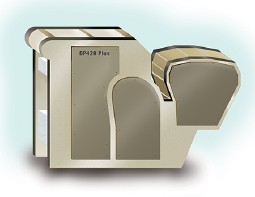More Design Tips
- • How “Category Creators” Inspire and Empower Customers
- • Draw People into Your Story with the Rule of Three
- • Three Steps to Great Design
- • Overcoming Obstacles in Design
- • Try Word Lists for Advertising “Gold”
- • Building the Perfect Letterhead
- • Attract Magazine Readers with Short-Form Columns
- • Essential Dos and Don’ts for Adding Beauty to Your Page
- • Grab Them Right Out of the Gate
Three Ways to Make Your Images Pop
Have you ever heard the expression, “a picture paints a thousand words?” It’s true. While words can limit our ability to communicate ideas effectively, even a split-second glance at an image can convey volumes of information. Whether you’re a marketer or a design specialist, it is essential to employ tactics that add power and clarity to your communication.
Here are three techniques you can experiment with in print marketing to amplify your visual messages:
Signs
On a basic level, signs are the combination of a word and a picture to create meaning.

What comes to your mind when you see a red plus sign, an image of a dog with a slash through it, or a photo of a distressed person clutching their neck with two hands? Signs convey simple, universal ideas that viewers can understand immediately. Even colors themselves can have inherent meaning! Signs are especially helpful when communicating with mass audiences at a glance.
Typograms
A typogram refers to the deliberate use of typography to express an idea visually.

For example, the word “half” displayed with only the top half of each letter showing might imply an eraser effect. The word “volleyball” with the “o” popping out above the text brings a playful, spirited message. Typograms use basic visual enforcement to add subtext to the words you display. Logos, taglines, or custom envelopes are a great place to put typograms to work.
Symbolic Imagery
While signs communicate a very straightforward message, many images have connotative meanings with far more complexity.

While a house denotes a place where you live, a home has far greater connotations (like family, security, and love). A subject, the objects surrounding it, and the editing techniques you use can all play a role in the cognitive messages you bring. Consider these examples:
- Cropping a woman’s face to only the eye can make viewers wonder what she is thinking
- Cropping a man’s body to only his head and shoulders may suggest he’s leaning in to hear more
- Inverting colors may insinuate a flashback scene or a memory
- Increasing contrast between the back and foregrounds might indicate the object behind a person is about to surprise them
- Larger contrasts or color saturation can elicit feelings or arousal or cheerfulness
- Increased sepia tones can give an aged or vintage look (like a photo carried in a wallet)
While language can limit our ideas, an image communicates on many different levels. Proficient designers know the more clarity or complexity you bring to your print pieces, the greater impact you will have on your target audience. Use signs, typograms, and symbolic imagery to add emotional weight, to increase the efficiency of your communication, and to achieve a greater return from your marketing dollars.


Basics Design 04: Image
by Gavin Ambrose and Paul Harris
Images are used everywhere, from cinema posters to perfume packaging, they have the power to elicit a response and impart information. Images can, quite literally, 'paint a thousand words', but understanding what they mean, when to use them and how to control them is becoming ever more crucial. The ability to alter images is made far easier through technological advances. Importantly though, what we're altering needs to be understood and controlled. "Basics Design: Image" will look at two distinct areas: what images mean and how we can create them. A primer in basic semiotics, "Basics Design: Image" will unravel the often complicated terminology associated with image 'reading'. On a practical level, this volume will introduce some of the many ways images are created; from reportage photography to illustration, computer generation to iconography and computer and print manipulation. "Basics Design: Image" aims to equip the contemporary designer with a series of tools and ideas. Inspirational examples from design agencies help support the 'basic' sections discussed and allow the reader to see the relevance of fundamental principles in practice.



Share this